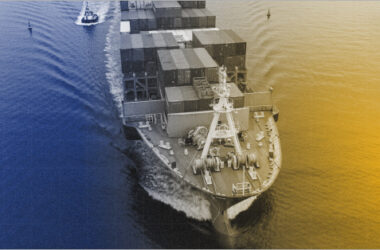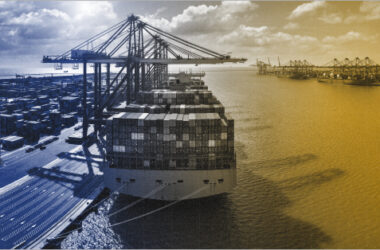If you are involved in the shipping or logistics business, you must have encountered these two terms : consignor and consignee. These two roles are pivotal to the success of any consignment. But who exactly are they, and how do they differ?
In simple terms, a consignment is a set of goods a consignor ships to a consignee. But that raises a curious question–who is really the owner of the goods, when the consignor is sending the goods? Whether it is the consignor who offloads them or the consignee who receives them ? Well, to get the right answer and to get a feel of how this relationship works, we are going to break down their roles and responsibilities. Read on!
Consignor Meaning: Who Are They?
The person or entity that transports the goods is the consignor. This may be a manufacturer, supplier, or a distribution facility- the point of origin of the shipment. The consignor usually retains ownership of goods until their delivery to the end buyer. They can also determine the selling price and can negotiate favorable prices where necessary.
Practically, the consignor initiates the process of transporting products in the supply chain and makes sure it is processed appropriately till the transaction is complete.
Important Roles Played by a Consignor
1. Initiating the Process of Shipping
The consignor is the initiator of the shipment, as he organizes the delivery of goods between two points. They also coordinate with carriers, make the right choice of transport methods and make sure that the shipment is well packed and documented prior to its departure out of their premises. Being in contact with the carrier will enable them to check on the position of the goods at every stage.
2. Risk Management
Shipping goods is risky at all times: at any moment, there can be damages, losses, or delays. These risks may be addressed by the consignor who in most cases collaborate with carriers and invest in marine or cargo insurance to cover possible financial losses.
3. Document Compliance
The consignor should meet all the regulatory requirements regarding documentation. This involves maintaining the bills of lading, commercial invoices, packing lists, and any other documents needed to obtain clearance of customs, or transfer of ownership. Good documentation will make the transaction run smoothly and free of disputes.
4. Ensuring Customer Satisfaction
The consignor helps in maximizing customer satisfaction by making sure that the shipping process is carried out in an efficient manner. On time delivery and clear communication build trust and promote repeat business from buyers.
5. Facilitating Market Expansion
Consignors play a vital role in expanding business reach. They enable businesses to access new markets and expand their customer base around the globe by transporting goods to other cities or even to other countries.
Rights and Liabilities of a Consignor
Being the original owner of the goods, the consignor possesses certain rights and obligations during the course of a shipment.
1. Retaining Ownership
No change of ownership of the goods occurs before the buyer obtains the goods and makes all payments due to the consignor. This assists in having control over the shipment and accountability throughout the transit.
2. Claim Entitlement
In case of loss or damage to goods in transit, the consignor is entitled to file a complaint against the carrier as per the terms of the carriage contract.
3. Seeking Legal Remedies
The consignor may take legal action against the carrier in the event of any disputes or financial loss- as stipulated in the contractual agreement.
4. Maintaining Documentation
The consignor has a duty to ensure that all the documents pertaining to the shipment, including the consignment note and invoices, are properly preserved. These are used as evidence in settlement of claims or in a court of law.
5. Understanding Regulations and Exclusions
The consignor should go through all regulations and exclusions before signing the shipment contract. This involves familiarity with maritime shipping regulations, liability cappings and carrier responsibilities so as to prevent future complications.
Consignee Meaning: Who Are They?
The consignee is a person or company that is receiving the goods that are shipped by the consignor. They may be the end user, or in some instances, an agent or middle man on behalf of the end user. The consignee could also be a bank or third party who is authorized to take delivery of goods.
After the consignee accepts the goods, he or she can become the legitimate owner- based on the payment terms and contractual agreement.
Important Roles Played by a Consignee
1. Receiver of Shipments
The consignee’s main role is to receive the goods delivered by the consignor. They are responsible for ensuring that the shipment arrives in good condition and verifying that it matches the order specifications.
2. Acting as Mediator or Final Buyer
Depending on the agreement, a consignee can either be the end customer or an intermediary appointed by the buyer. In the latter case, they handle the billing, coordination, and onward delivery of the goods.
3. Fulfilling Clearance Procedures
Consignees must manage customs clearance and pay all applicable duties, taxes, and fees. They also ensure all import regulations are followed so that goods are legally transferred.
4. Coordinating Transportation
Once the goods arrive, the consignee arranges for further transportation—whether to a warehouse, retail outlet, or distribution center. They must coordinate with local transporters to make sure the products reach their next destination safely and on time.
5. Managing Documentation
The consignee must maintain accurate records, including bills of lading, shipment contracts, invoices, and handling instructions. These documents are essential for ownership transfer and proof of delivery.
Rights and Liabilities of a Consignee
Here are some key rights and responsibilities that apply to a consignee:
1. Right to Demand Delivery
The consignee is legally entitled to demand delivery of goods according to the shipping contract. This makes them able to claim ownership of the goods after all the formalities have been fulfilled.
2. Transfer of Ownership
The consignee becomes the owner of the goods, once the payment has been made.
3. Claim of Entitlement
In case of damaged goods or any failure to deliver an item, the consignee has a right to claim damages against the carrier, as per the contract terms.
Examples of Consignor and Consignee
To have a better idea of this relationship, let’s take an example.
Consider a company called X Electronics located in Hong Kong that produces gadgets and sells them to a retailer called Y Traders located in India. X Electronics in this case is the consignor -the one who ships the goods. They do all the transportation arrangements and choose the carrier.
Y Traders is the consignee, the party receiving the shipment in India. It is, however, only upon the full payment of the money by Y Traders to X Electronics that the ownership of the goods is transferred to Y Traders. Until then, the consignor retains ownership and responsibility for the goods in transit.
Consignor Vs. Consignee : A Tabular Comparison
| Basis | Consignor | Consignee |
| Meaning | The consignor is the shipper or seller who dispatches the goods. | The consignee is the recipient who takes delivery of the goods. |
| Ownership of Goods | The consignor is the original owner until full payment is made. | The consignee becomes the owner after payment or as per contract terms. |
| Duties | Arranges transportation, prepares documentation, and manages communication. | Pays customs duties, checks goods on arrival, and handles further transport. |
| Documents Required | Commercial invoice, certificate of origin, packing list, shipper’s instruction letter, bill of lading. | Bill of lading, commercial invoice, arrival notice, insurance certificate. |
| Payment | Retains ownership until the buyer completes payment. | Makes payment to obtain ownership if they are the final buyer. |
Final Thoughts:
The truth is that consignors and consignees do not compete with each other in any way- they are equally essential in making sure that goods travel smoothly along the supply chain. They have clearly defined roles and responsibilities and when they work in harmony, shipments arrive at the destination safely and on time.
However, despite the most appropriate precautions, shipping is always risky. Delays or damages may occur due to unpredictable weather, accidents or logistical problems. This is one of the reasons why Marine Insurance has become vital to any business that engages in maritime trade. A Marine Insurance Policy provides financial protection against theft, loss and damage during transportation. Not only does it assist businesses in meeting the trade regulations but it also provides the consignors and consignees with peace of mind. Such a protection is worth investing in since it will mean that the businesses will continue smoothly even in case of unexpected occurrences.
BimaKavach offers customisable Marine Insurance policies designed to protect your cargo and vessel against unforeseen risks during transit. Our seasoned experts will provide valuable insights towards making insurance simple to understand and hassle-free for you.







